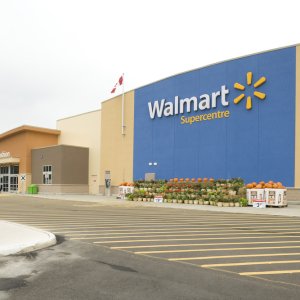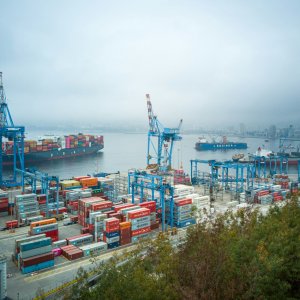Sustainable Value Chains: The Present and Future for Companies

STORY INLINE POST
If we could see the Earth from another planet, we would notice a sphere spinning and changing very fast. We would see red zones of bush fires from Australia to Spain. We would hear gun explosions and rockets from Ukraine to the Middle East. We would smell dead bodies in crowded pantheons, and we would feel the dry lands waiting for the rain. Our civilization is facing many crises at the same time, including the economy.
In the last few years and past months, the pandemic has challenged companies to stay afloat. Many small businesses couldn’t resist the economic crisis and others struggled to survive. One of the main issues has been the supply chain. China and other Asian countries closed their factories and ports for many months. There were no containers available, prices were fivefold, and raw material shortages are still a big problem for many companies around the world. This situation demonstrated how dependent we are on global supply.
This current reality has pushed many companies to act differently and rapidly so they can keep their business afloat. The supply chain is a critical pillar for businesses and is now a strategic piece of their value chains.
In recent weeks, I’ve started hearing more often about the concepts of sustainable value chains, sustainable supply chains, business resilience, and onshore/nearshore operations. I’ve found that the terms value chain and supply chain are constantly mixed up, so let’s start with some definitions that will help us to talk about the same things:
Value chain:processes and transformations of materials into finished products with a higher value and competitive advantage that satisfies consumer needs.
The process starts with understanding the market’s needs and goes through design, research and development, up to the finished products or services. The added value can be provided in the raw material supply, in the process of transformation, in the customer service, or in the marketing approach.
Supply chain:processes of controlling the information, production, inventories, logistics, and funds that allow profitability for the company while achieving client satisfaction on time.
The supply chain process starts from the client's request and goes through planning, procurement, production, logistics, warehousing, and last-mile delivery.
We can notice that the value chain and supply chain overlap in some stages of the chain; they coexist from an operational and business perspective. Both require strategic planning and aim to satisfy the client's needs.
Business resilience:the ability to quickly adapt to changes and unexpected disruptions in the market demand, regulations, etc, while maintaining business operations.
Onshore operations: when the operations are located in the same country where the market is.
Nearshore operations: when the operations are located in a neighboring country where the market is.
Sustainability: meeting the needs of the present without compromising the ability of future generations to meet their own needs.
It’s balancing the social, environmental, and economic aspects, understanding that the Earth is a living body with limited resources that must be managed correctly so human civilizations can thrive for generations.
Within this context, it’s easier to understand the meaning of sustainable value chains: The process of transforming a product or service through its life cycle, adding improvements that increase its value, satisfying the consumer's need in a way where profitability is achieved, social rights are covered, and environmental impacts are mitigated and compensated.
By implementing a sustainable value chain, companies can mitigate risks, save resources, optimize processes, increase productivity, generate innovation, achieve social welfare, reduce waste and carbon emissions, reduce environmental impacts, and promote their values.
A sustainable value chain will benefit other stakeholders as well, from the suppliers, which will be deeply involved in innovative processes, to new local suppliers that can offer their services to the company, local communities around the company’s facilities, the shareholders that bet on a long-term investment, the environment receiving less pressure, and the final consumer.
During the past decades, the trend was to have the operations offshore, especially in Asia, to take advantage of the low cost of production, outsourced services, lax environmental regulations, and fiscal subsidies. Now, with the current geopolitical situation, high inflation, and global supply chain issues, international corporations are rearranging their operational strategies. Companies are relocating their facilities closer to their market (onshore or nearshore) to have a faster response to demand. They are creating resilient networks in the supply chain (closer suppliers, local raw materials, agile logistics, versatile warehousing), and they prefer to secure enough inventories compared to the just-in-time approach, even if that affects cash flow.
Understanding this new trend, Mexican companies must be resilient and smart to take advantage of the coming opportunities. As we know, Mexico has a privileged geographic position being next to the biggest market in the world. Sectors like automotive, aerospace, electronic, textile, and other manufacturing industries must invest in developing skilled labor, infrastructure and technology, and in compliance standards that meet the supply chain requirements.
In this context, entrepreneurs, but social entrepreneurs especially, must take a step forward to offer their value propositions (social impact, local production, eco-innovation, carbon neutral supply chain, scalability, verticality and storytelling) to international companies that require regional and local suppliers that can be integrated into sustainable value chains nearshore so they can meet the customer’s needs on time, and meet their ESG (environmental, social and governance) commitments.
Sustainable value chains might be hard to achieve right away but it is compulsory for companies to start the transition. Not doing so will be a disaster for human civilization in less time than expected. In these times, adding value to a product or service must contribute to solving the social and environmental issues humanity is facing, and not just adding value to a supposed customer’s need or just for profitability itself.
























